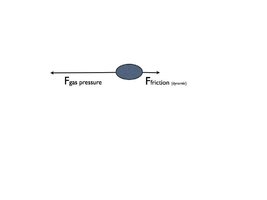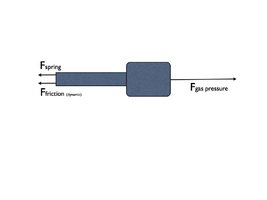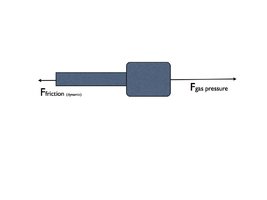Oooops
terraformer said:
Smokey, learn how to quote properly.
I know how, I was attempting not to embarrass you.
I will make a few points.
1) If it was purely mechanical, then you are saying that a 1/10 of an ounce brass casing has the combined mass and kinetic energy to cycle the slide on its own. Think that through.
I have thought it through. There is no gas pressure working on this action, it is completely mechanical, although the gas pressure is the original causing force of the mechanical action. The barrel recoils as well as the slide for a locked up period of rearward travel. This is mechanical and not pressure. The pressure has already been converted into mechanical.
2) I never said friction was not at work here, but your assertion that friction is what is causing the barrel to hold forward by the mass of the bullet is absurd.
Read what I wrote, not what you think I wrote. The barrel is moving in the OPPOSITE direction of the bullet because of friction as soon as the bullet starts to move. There is nothing in my comment to propose that anything else other than the recoil spring is holding the slide and barrel in a forward position.
Your words here.
It is the pressure inside of the barrel holding it forward and the slide backwards (again from the pressure built up inside the plugged barrel) that leaves it locked up.
Again I say nay. The only thing holding anything forward is the recoil spring which starts to compress as soon as the mass of the slide and components is superseded.
Why bother having a locking mechanism if it all magically happens in perfect timing?
The pivoting toggle is the perfect timing both in distance and time. That took some serious engineering. The barrel and slide remain locked together so that the expanding gasses have time to dissipate out the front before the action unlocks and allows extraction and ejection.
Also, if the force imparted on the bullet was singular, then the longer the length of the barrel would yield slower speeds on the bullet (because friction would be higher), though the opposite is true.
I have no idea what that was meant to say. Greater frictional resistance in a longer barrel is a fact. Are you saying it is not? Are you trying to tell me that if I put a 28" barrel on a 1911 and used the same ammo, that the speed of the bullet will increase? That's crap and you know it.
3) if the action wasn't operated on gas pressure, then compensators would neither work nor be needed.
They put compensators on pump shotguns. Are they gas operated? What's that have to do with the price of lemons? Compensators are a whole new topic.
4) In a blowback design (walther PPK), the gas pressure blows back the slide. In a locking design, the gas pressure blows back the barrel into the slide.
Not when they are locked together, they work as a unit until disengaged. The brass casing is pushing on bolt face as well as the barrel recoil forces. Are you talking air guns here? (Walther) I thought we were talking
recoil activated firearms.
Look... Take a fixed breech muzzle loading cannon. Load it up with powder and ball. Stick a fuse in the touch hole and light it. There is NO GAS PRESSURE working on the recoil of anything and yet the cannon rolls back. That is a
converted mechanical force. The kinetic energy mechanical force is the RESULTANT of the pressure increase. The slide and barrel of a 1911 are the same since the moving parts are free to move rearward.
5) read up on how rocket engines work. Then you may get how recoil works.
I was working nuclear ballistic missiles probably before you were born. Don't get sarcastic. I am dearly trying not to do that with you.
6) grab a 1911 and take a dowel to push on the barrel. You will open the slide the distance of the barrel movement. Now imagine putting a very high amount of force on that barrel. It would throw back the slide most likely, right?
I told you last post, hit the muzzle with a hammer and you will drive them both back and they will separate and the slide will continue. The bullet and expanding gas start the whole slide, barrel and other components rearward as soon as the mass of all parts is overcome and that is well before the .0007 second time. The, "hammer" in this example is the explosion which acts in all directions equally. The bullet is pushed out the front and the resultant recoil mechanical action, not gas pressure, is the equal and opposite force.
Now are you still trying to tell me that the slide and barrel are staying put till the bullet has left the barrel? The whole reason of having a locked barrel to slide is to allow the time for the pressure to dissipate to the degree that the extraction process will not have a nasty quantity of gas blow back from the back of the barrel in the direction of the shooter. Barrel pressure has been reducing ever since the bullet left the muzzle well before extraction.
Your original words:
Also the pressure needed to lock the slide to the barrel needs to be sufficiently high enough that the lock releases WELL BEFORE the pressure in the barrel has dissipated so that remaining pressure is able to toss the slide back.
Again, no.
The only thing holding the barrel and slide together after detonation is inertia and then they are separated by the toggle pivot, since the recoil spring tension has been already been over ridden by mechanical energy before that point.




